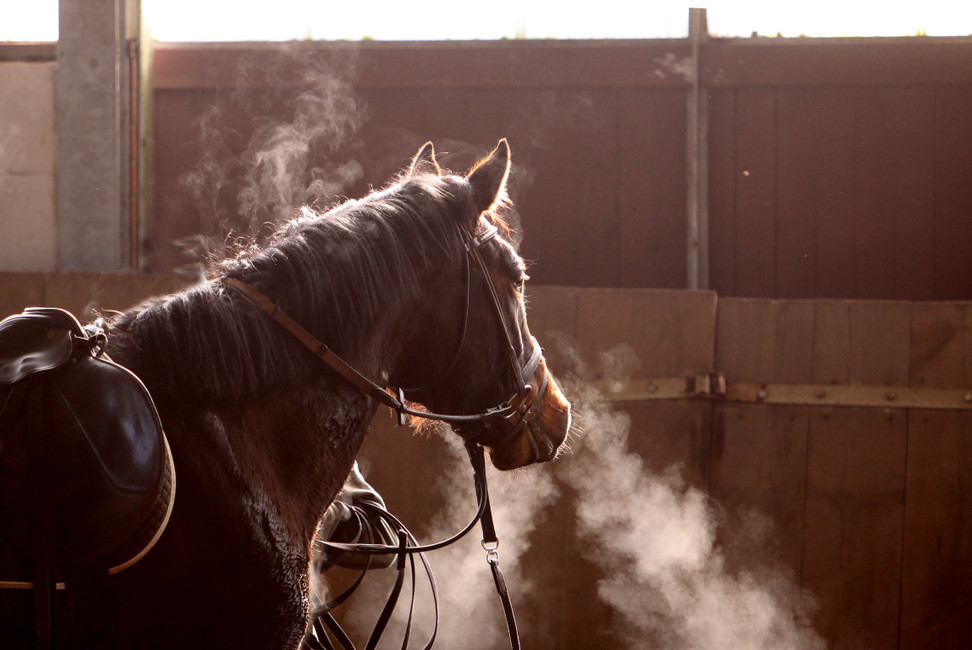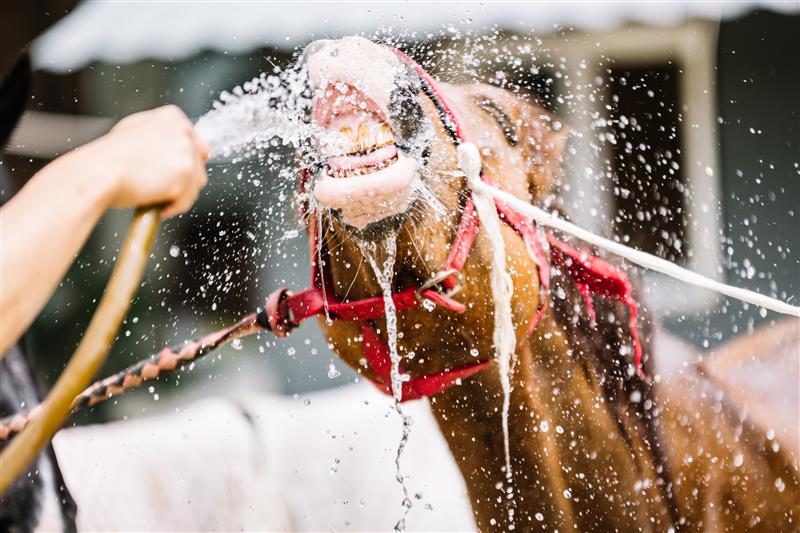
Is it Too Cold to Bathe Your Horse?

As we know, colder temperatures are not usually conducive to a voluntary run through sprinklers. But for your horse, getting wet in the cold may be a necessary evil. With the days getting shorter, temperatures dropping and your horse’s hair growing longer, it is important to keep your horse well-groomed and bathed just like during the summer months. However, cold temperatures require different steps in the bathing process that may differ from your current routine.
During winter months, a horse’s coat lengthens to maximize heat retention. A longer coat keeps a horse warm, but it can also trap dirt and sweat leading to skin disease and irritation if not cleaned properly and regularly.
Looking for the best horse shampoo money can buy? Check out Sore No-More Classic Massage Shampoo at Arenus Animal Health. It's irritation-free and provides a deep clean for your horse's coat without stripping it of its healthy, natural oils.
To bathe your horse in the winter months, make sure to use a draft-free stall indoors with warm water if available. Your horse should also be in good health with no sign of illness. If your horse is older or ill, the combination of cold temperatures and declining body temperature can further health concerns or create new ones. (The Horse Journal). To keep your horse safe and comfortable, always make sure to bathe him or her in temperatures warmer than 50 degrees Fahrenheit. Preferably early in the day or at the warmest part. (The Horse Channel). It is not safe to bathe your horse outside in cold temperatures.
Once you have found the right stall and made sure the temperature is warmer than 50 degrees Fahrenheit, the next step is to fill a five-gallon bucket with water that is almost too warm to touch. Using a bucket and sponge instead of a hose allows you to be more precise with water and horse shampoo placement. Once the bucket is filled, begin washing only the necessary areas of the horse. If the whole horse must be washed, it is best to wash only half of the horse at a time, covering the clean and damp part of the horse with a cooler once it has been dried. If warm water is not an option for you, it is best to limit the amount of skin and coat exposed to cold water, washing only below the elbows if possible. (The Horse Channel).
After the horse has been washed and before the cooler is put on, the horse must be thoroughly dried. The best practice for doing so in cold weather is to “scrape off excess water as quickly as possible, then rub the wet area briskly with a thick terrycloth towel” according to The Horse Channel. Once most of the excess water has been removed, the cooler can now be added. Coolers are designed to wick moisture away from the skin while keeping horses warm to eliminate the possibility of the horse getting chills or developing bacteria from residual moisture on their skin.
The key to bathing your horse in colder weather is making sure the horse stays as warm as possible. Washing the horse only in areas that need it or by section can help to limit the drop in skin temperature. Lastly, using a cooler after hand drying is necessary to ensure your horse gets dry and stays warm. Overall, bathing your horse in colder weather isn’t all that different than what your normal bathing routine, it only requires a few extra steps and it should not discourage you from properly bathing and maintaining your horse.
And, when you want a horse shampoo that uses all-natural ingredients, incorporates the classic Sore No-More formula and offers relief from dry skin and inflammation, be sure to use Sore No-More Classic Massage Shampoo! No other horse shampoo has the tried and true Sore No-More formula to simultaneously provide pain relief and an all-natural clean.


